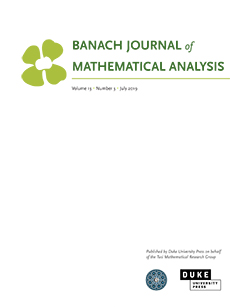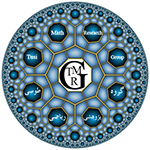Abstract
The Lupaş $q$-transform emerges in the study of the limit $q$-Lupaş operator. This transform is closely connected to the theory of positive linear operators of approximation theory, the $q$-boson operator calculus, the methods of summation of divergent series, and other areas. Given $q\in (0,1), \;f\in C[0,1],$ the Lupaş $q$-transform of $f$ is defined by: $$(\Lambda_qf)(z):=\frac{1}{(-z;q)_\infty}\cdot\sum_{k=0}^\infty\frac{f(1-q^k)q^{k(k-1)/2}} {(q;q)_k} z^k,$$ where $$(a;q)_k:=\prod_{j=0}^{k-1}\left(1-aq^j\right),\; (a;q)_\infty:=\prod_{j=0}^{\infty}\left(1-aq^j\right),\;\;k\in {\Bbb N}_0,\;a\in {\Bbb C}.$$ The analytical and approximation properties of $\Lambda_q$ have already been examined. In this paper, some properties of the Lupaş $q$-transform related to continuous linear operators in normed linear spaces are investigated.
Citation
Sofiya Ostrovska. "Geometric properties of the Lupaş $q$-transform." Banach J. Math. Anal. 8 (2) 139 - 145, 2014. https://doi.org/10.15352/bjma/1396640059
Information





